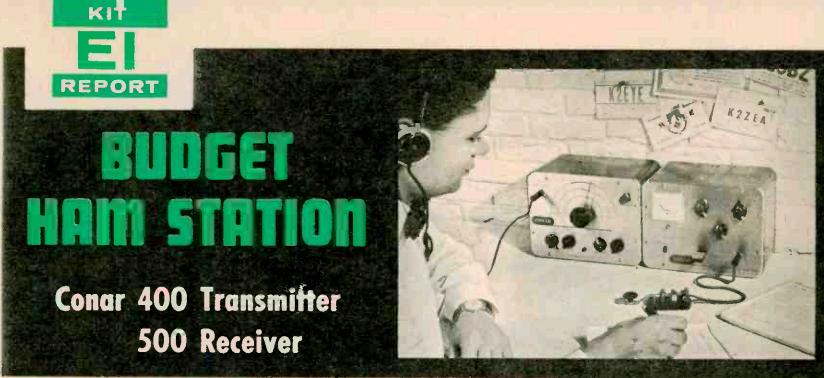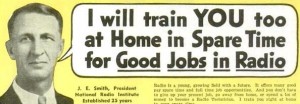 In an earlier post, we looked at the history of the National Radio Institute of Washington, DC. Started in 1915 as the National Radio School, it featured prominently in national publications for decades, as founder James E. Smith, who apparently never aged, announced in virtually every issue that he would train you at home in your spare time for a good job in radio.
In an earlier post, we looked at the history of the National Radio Institute of Washington, DC. Started in 1915 as the National Radio School, it featured prominently in national publications for decades, as founder James E. Smith, who apparently never aged, announced in virtually every issue that he would train you at home in your spare time for a good job in radio.
One of the school’s most famous products was the “Conar Twins,” a transmitter and receiver marketed for the novice amateur operator. They were a CW transmitter and receiver covering the 80, 40, and 15 meter bands. Fifty years ago this month, they were reviewed in Electronics Illustrated, July 1965.
According to the review, both kits were relatively easy to put together, with the transmitter taking about six hours, and the receiver, ten. While a few errors in the assembly manual were mentioned, both kits were described as being easy to assemble. The transmitter was tackled first, and the author reported no reports of chirp on the signal of the simple transmitter.
The review of the receiver seems to confirm the popular opinion that the receiver is surprisingly good for its price, with the performance designed as “tops.” The circuit was a superheterodyne, with two stages of IF amplification. The review noted that the receiver could be aligned without any instruments, but that instrument alignment was really necessary for top performance.
In 1965, the new novice could get on the air with a respectable station for only a $64 investment thanks to the Conar Twins.
Click Here For Today’s Ripley’s Believe It Or Not Cartoon ![]()


